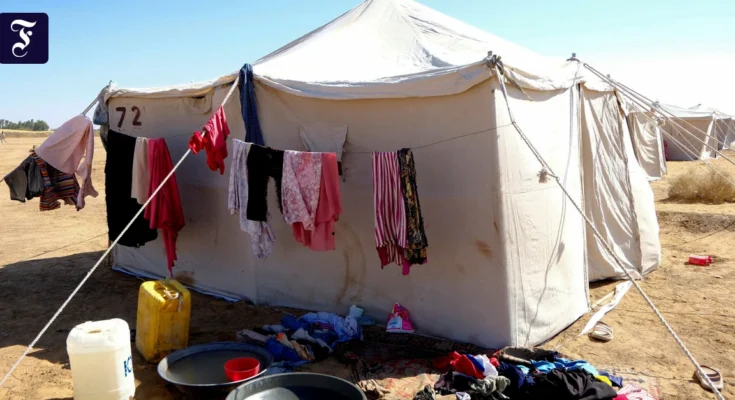The United Nations organization, the World Food Program (WFP), painted a grim picture of the world’s food situation in a press release published on Tuesday. According to their estimates, 318 million people will be affected by a hunger crisis “or worse” in the coming year. This figure is twice as high as in 2019. Conflict, extreme weather and economic instability are fueling crises around the world, the WFP said.
At the same time, the financial resources of the organization headquartered in Rome declined drastically. For this year, UN member states and multilateral institutions such as the EU Commission have provided a total of around 5.2 billion dollars, some of which will be provided over several years. The comparable figure for the previous year was $9.7 billion. Therefore, the cut amounts to about 46 percent. The United States, always the WFP’s main funder, made deep cuts. This year, your contribution will drop about 61 percent to $1.7 billion.
But in relative terms, the Federal Republic of Germany is making even more cuts, at least as it stands now: According to figures available on the WFP website, the federal government reduced its contribution this year by 63 percent to just about $367 million. Federal President Frank-Walter Steinmeier touched on Germany’s difficult economic situation during a visit to WFP in late September. For comparison: In 2022, Germany’s contribution will reach $1.7 billion, almost five times as much. The WFP hopes Germany’s contribution will increase slightly this year as budget discussions are still ongoing, but the organization does not expect a significant increase.
“Completely unacceptable in the twenty-first century”
WFP Executive Director Cindy McCain noted that currently there is famine in Gaza and parts of Sudan. “This is completely unacceptable in the twenty-first century.” Based on the WFP definition that has been in place for 25 years, there have never been two famines with so many deaths due to starvation occurring simultaneously in the world. Hunger is taking root all over the world. “Early, effective and innovative solutions can save lives,” McCain said, but current resources are not enough. Because of the cuts, the WFP has been forced to concentrate its food aid on about a third of those in need.
According to a WFP report in October, the funding cuts could push some 13.7 million people currently receiving food aid into a classification called “IPC4.” There are large gaps in food supply in this category, with acute malnutrition and mortality rates that are significantly above average. The only way to close the food gap is to sell almost all assets. The loss of income is considered irreversible; 15 to 30 percent of the population in this category experiences acute malnutrition. The community experienced a drastic reduction in dietary diversity, and calorie intake was below 2,100 calories per day. The “IPC4” classification is one level above the worst category, hunger.
Apart from Sudan and Gaza, the countries of Afghanistan, the Democratic Republic of Congo, Haiti and Somalia are currently considered special hot spots. Yemen has also been badly affected by budget cuts, mainly for political reasons due to the Houthi rebels. Donor countries are currently meeting with the UN organization at WFP headquarters in Rome. The WFP is asking for $13 billion in funding for 2026, but knows that most will likely be approved, namely $6.5 billion in the best-case scenario.


